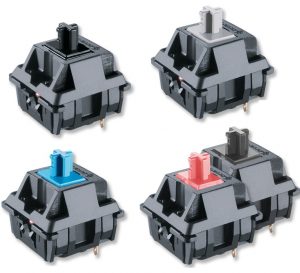How Membrane Switches Contribute to the Sturdiness of Electronic Control Panels
Membrane buttons play an essential role in improving the longevity of electronic control panels, mainly through their multi-layered construction which gives effective defense versus environmental factors such as wetness and dirt. The lack of moving parts significantly lowers the probability of mechanical failures, making membrane layer changes ideal for requiring applications.
Meaning of Membrane Buttons

Membrane buttons are created to be thin and lightweight, making them ideal for applications where area is restricted. They can be made in numerous shapes, dimensions, and colors, providing adaptability in layout that meets aesthetic and practical demands. Furthermore, membrane buttons can incorporate different modern technologies, such as responsive responses and LED signs, improving individual experience.
Because of their construction, membrane layer buttons are frequently resistant to dust, moisture, and general wear, contributing to their toughness in demanding environments. Their smooth layout not just facilitates very easy cleaning but additionally minimizes the danger of mechanical failure, making them a favored selection for makers looking for trustworthy individual interfaces in their electronic control panels.
Defense Versus Ecological Elements
The design of membrane switches over inherently supplies a degree of protection versus numerous environmental factors, which is crucial for keeping capability in difficult conditions - Membrane Switch. These buttons are normally built with layers of versatile materials that secure interior components from moisture, dust, and contaminants. By enveloping the circuitry, membrane layer changes reduce the danger of short circuits and deterioration, which can dramatically harm performance
Moreover, using durable adhesives and sealants throughout manufacturing enhances their resistance to ecological challenges. Membrane buttons can withstand exposure to chemicals and solvents, making them appropriate for industries such as food handling and healthcare, where health and tidiness are extremely important. Their seamless surface area style additionally prevents the buildup of dirt and microorganisms, assisting in easier cleaning and upkeep.
Temperature level changes are an additional environmental problem, and membrane switches are crafted to operate efficiently throughout a wide variety of temperature levels (Membrane Switch). This flexibility ensures that control board continue to be operational in different setups, from commercial environments to consumer electronics
Effect on User Communication
Customer interaction with digital control board is considerably article affected by the layout and functionality of membrane buttons. These buttons give a tactile interface that improves the general individual experience, allowing for instinctive navigation and control. Their responsive nature makes sure that customers receive prompt feedback upon activation, which is vital for jobs calling for accuracy and efficiency.
Moreover, the smooth surface of a knockout post membrane switches promotes very easy cleansing and upkeep, promoting user confidence in the reliability of the interface. This cleanliness is particularly important in settings where health is extremely important, such as medical or food processing setups. Additionally, the small and light-weight design of membrane switches adds to the aesthetic charm of control panels, encouraging user engagement with a contemporary and smooth look.
Furthermore, the integration of aesthetic aspects, such as published symbols and backlighting, assists users rapidly more information identify features, reducing the learning contour connected with new equipment. Consequently, individuals can run devices a lot more properly, leading to boosted performance and contentment. In summary, membrane switches play a critical role in boosting individual interaction by incorporating performance, aesthetic appeals, and ease of usage, inevitably causing boosted functional efficiency.
Design Versatility and Customization
Design versatility and customization are crucial elements of membrane layer buttons, allowing manufacturers to customize electronic control panels to details applications and individual demands. This adaptability enables the combination of various style elements, such as shades, graphics, and textures, which can improve the aesthetic appeal and customer engagement of the control panel.
Membrane buttons can be personalized in dimension and shape, fitting a large range of gadgets and applications, from commercial machinery to consumer electronic devices. This convenience ensures that suppliers can create instinctive user interfaces that align with customer assumptions and functional needs. Additionally, the ability to integrate unique attributes such as backlighting or tactile feedback better improves use, enabling a much more interactive experience.
In addition, the manufacturing procedure for membrane switches supports the rapid prototyping of styles, allowing makers to repeat and refine their ideas quickly. This capacity not just accelerates the development timeline but likewise makes sure that the last item meets details useful and visual standards.

Cost-Effectiveness and Durability
Cost-effectiveness and longevity are significant benefits of membrane layer buttons, making them an appealing option for producers and end-users alike. These switches are generally cheaper to create than conventional mechanical switches, mainly due to their streamlined production processes and the reduced variety of components required. This price advantage prolongs not just to first production yet additionally to long-lasting operational costs, as membrane buttons commonly require much less upkeep and have a reduced failure price.
Moreover, the longevity of membrane changes contributes to their total worth. Created from long lasting materials, they are resistant to ecological elements such as dampness, dust, and chemicals, which can lead to early wear in various other switch kinds. The absence of moving parts lessens mechanical failure, permitting membrane layer switches to keep capability over expanded periods.
This toughness is especially beneficial in applications needing consistent performance under requiring conditions, such as medical gadgets and commercial devices. Inevitably, the combination of cost-effectiveness and durability makes membrane layer switches over a financially viable option for suppliers, providing reliable services that endure the examination of time while optimizing monetary factors to consider.
Verdict
In conclusion, membrane layer switches considerably enhance the sturdiness of electronic control panels through their robust building and construction and protective features - Membrane Switch. On the whole, membrane switches over stand for a reputable and economical option for improving the longevity and functionality of electronic control systems.